 Portrait of Tsai-Ling Tseng by Chia-Lun Chang. Courtesy of the artist and OTP Copenhagen.
Portrait of Tsai-Ling Tseng by Chia-Lun Chang. Courtesy of the artist and OTP Copenhagen.
OTP: Are there certain thoughts or ideas that are easier to explore in smaller paintings?
TLS: In my exploration of smaller paintings, I've found that certain thoughts or ideas are more accessible. Accepting that a painting may not work at the moment and deciding whether to return to it or let it go has become a healthy studio habit I developed while working on smaller paintings.
Small paintings give me more freedom to take risks than I usually would. If an attempt fails after a few tries, I can easily put it aside in a studio corner. However, with larger paintings, they become too prominent to ignore, trapping my mind as I want to find solutions every time I pass by.
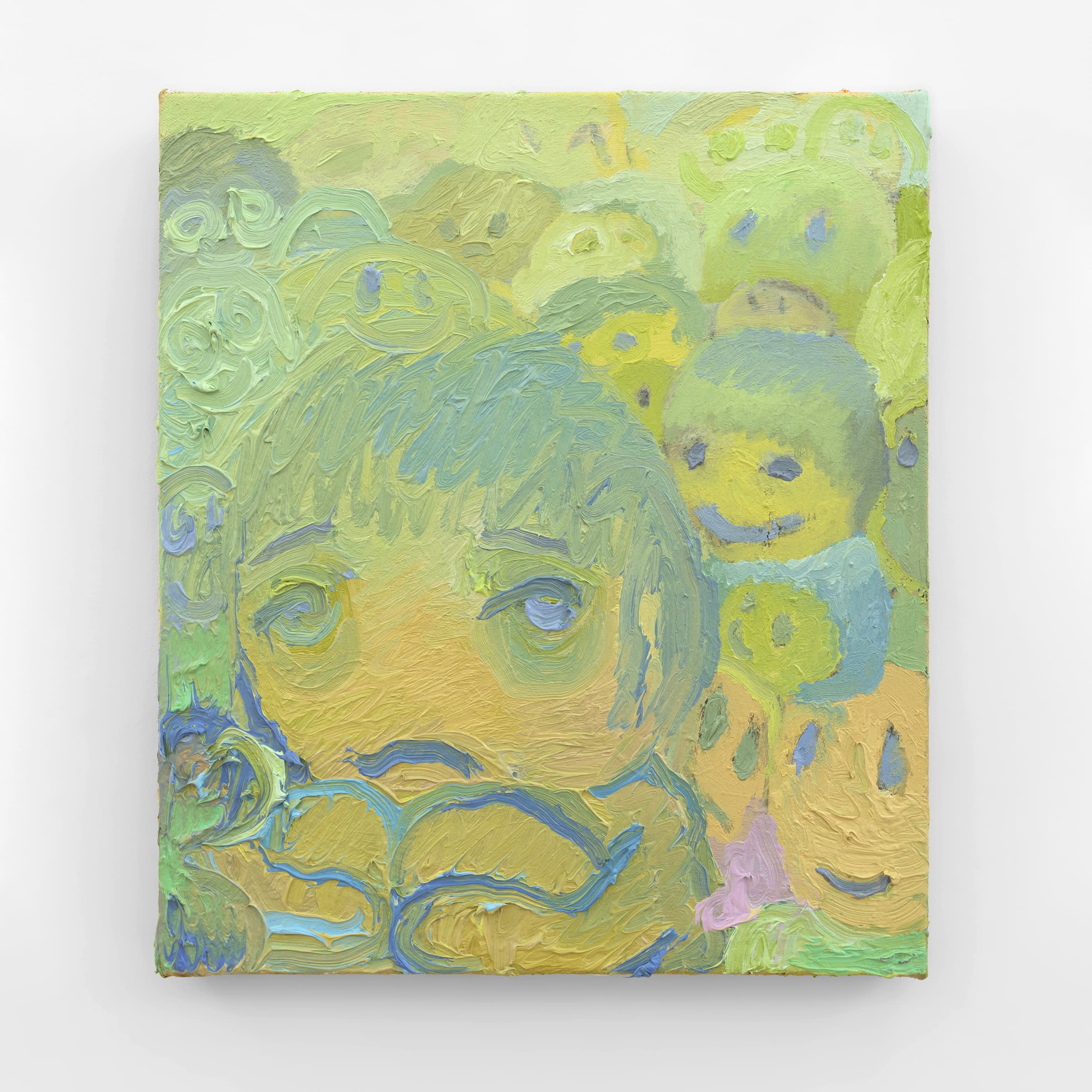 Tsai-Ling Tseng, Teaching Day, 2024, oil on canvas, 38 x 33 cm. Courtesy of the artist and OTP Copenhagen.
Tsai-Ling Tseng, Teaching Day, 2024, oil on canvas, 38 x 33 cm. Courtesy of the artist and OTP Copenhagen.
OTP: How do your personal relationships inform the dynamics between figures in your works? Are there recurring characters that are based on “real-people?”
TLS: My personal relationships significantly influence the dynamics between figures in my works. They are quite personal, often depicting close individuals in my life, including myself. The portrayal of these figures is based on what the painting requires in the moment and how they appeared in my memories, with distinct features crafted accordingly.
OTP: Are there particular experiences in your life that have informed the paintings in this show in particular?
TLS: While the paintings are connected to my life experiences, they don't represent a singular event. Instead, they incorporate various moments from different places and times, utilizing the painting space to weave them together. These amalgamated moments form a new reality within the painting world, shaped by both my life experiences and imagination. The completed pieces often convey emotions that resonate with frame of mind I was in during their creation.
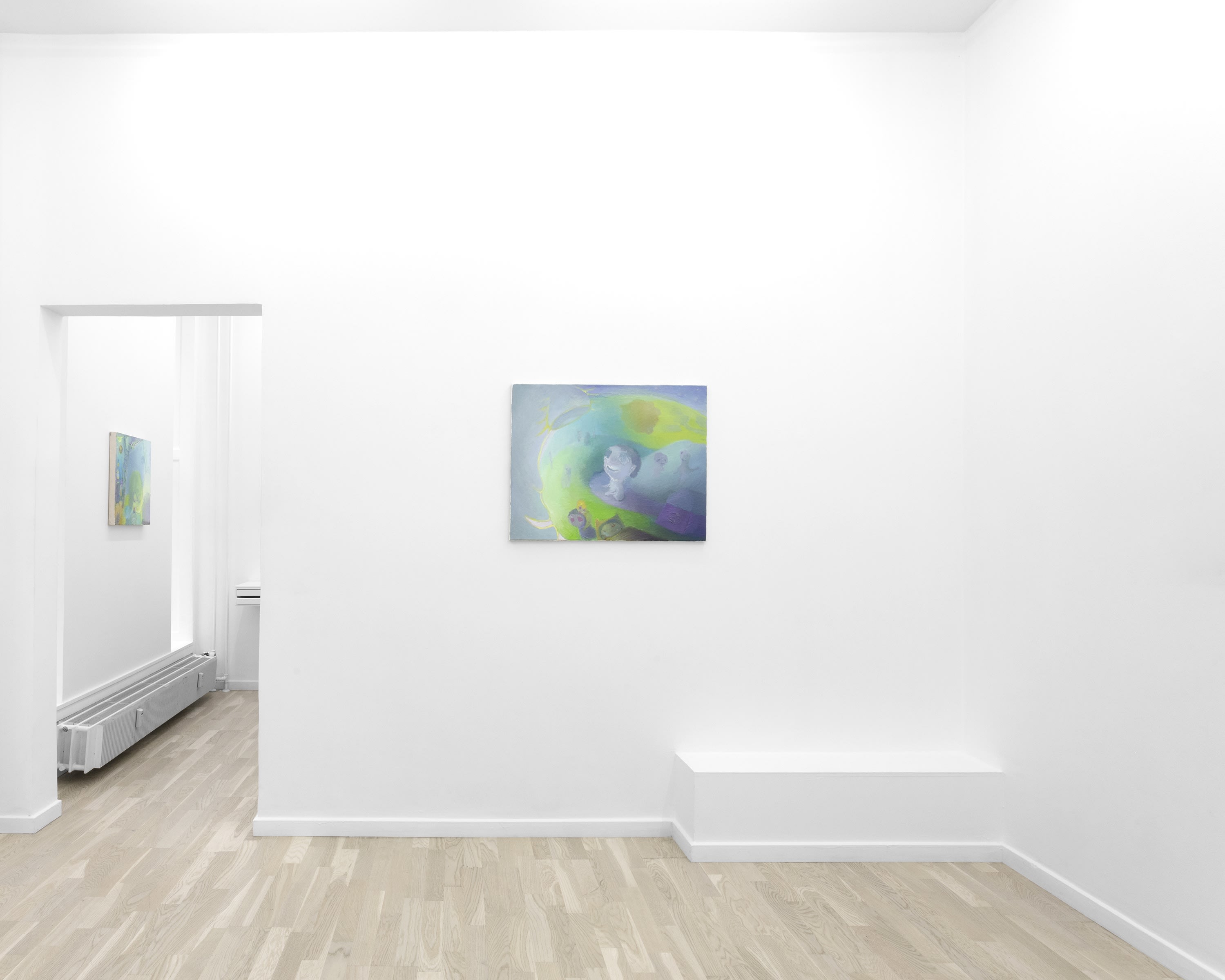
Tsai-Ling Tseng, Small Paintings, 2024, installation view. Courtesy of the artist and OTP Copenhagen.
OTP: Are these paintings interested in story-telling?
TLS: Yes, but the storytelling aspect has shifted from my previous body of works. In the recent pieces, I intentionally avoid having a specific narrative when I start. Instead, I let the paint guide my intuition, and the storytelling quality comes along with the figures emerging from the process of painting. The end result is about sharing the decision-making and intuition with notions of figures in a painting world.
During the process, various elements—figures, space, lights, or shapes—start 'talking' to me. Sometimes, they pose questions about how they coexist or how a figure’s perspective aligns with another place on the opposite side of the canvas. I solve these situations and relationships by tweaking their gaze, adjusting colors, or changing sizes. Other times, things happen unconsciously, and the work for me becomes recognizing those decision-makings and understanding my train of thought.
It’s a mixture of figuring out the formality of a painting while engaging with my imagination. I'm more interested in storytelling as part of the process, a game I play while painting. These voices keep me engaged, and I become more connected with the paints. Storytelling is not the end result but part of the process of working out a painting.
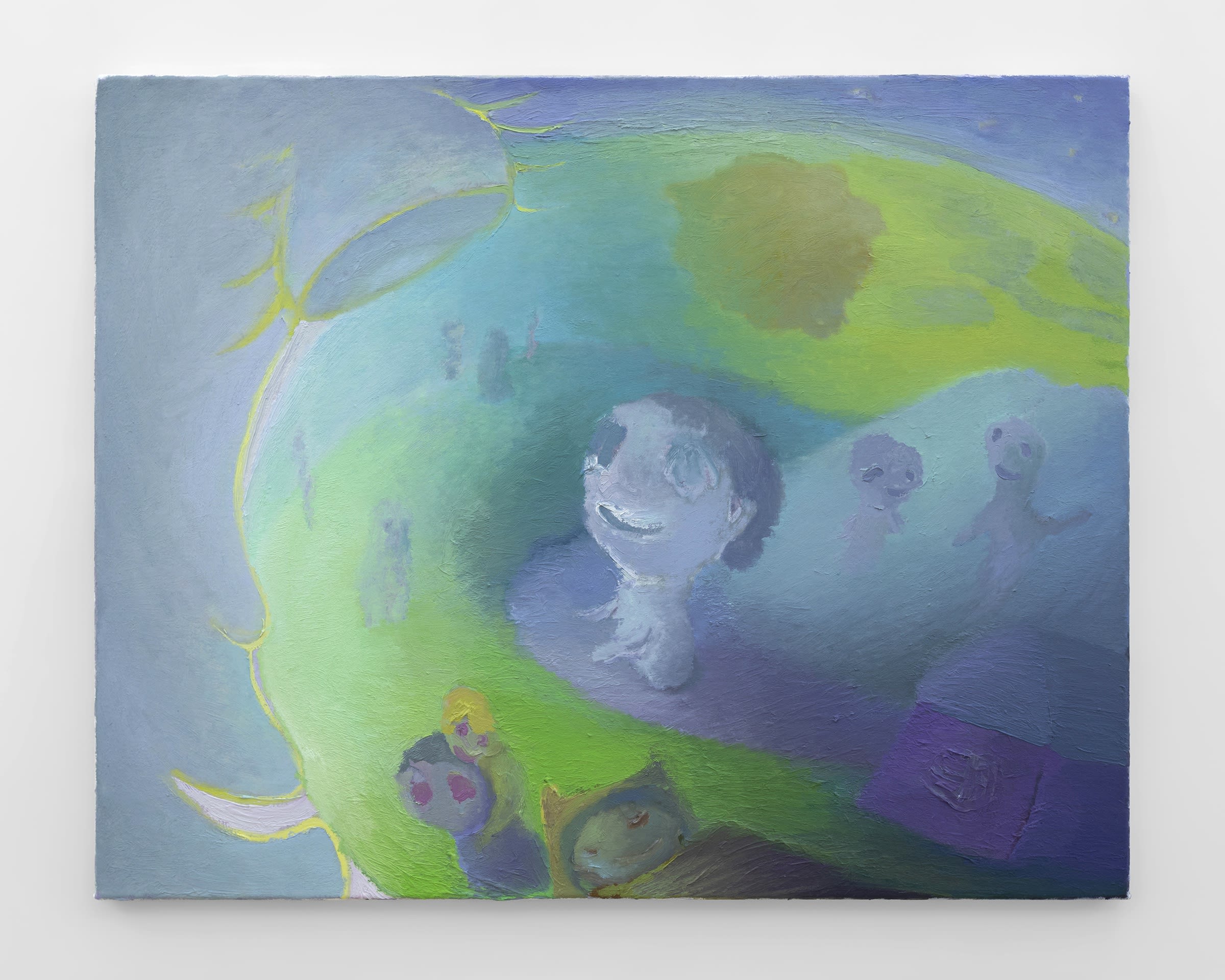
Tsai-Ling Tseng, Inside The Orb, 2024, oil on canvas, 61 x 76 cm. Courtesy of the artist and OTP Copenhagen.
OTP: In some of these paintings, it seems like there is a sort of warped almost fish-eye effect at work. Are there specific optical effects that you have been experiencing with recently?
TLS: I wasn’t aware of that until you mentioned it. My thoughts about perspective don't focus much on the illusion of depth or creating a believable structure. Instead, I consider perspective as a means to connect different places within a space. I often imagine how I, as the self-portrait figure in the painting, experience things around me in the painting world. If there are numerous elements to experience, it naturally results in a fish-eye effect situation.
OTP: Many of these works have built-up impasto surfaces. Could you talk a little bit about how you understand those cumulative effects in these works?
TLS: I think of paint as a physical material with its own weight, and the built-up impasto surfaces serve as evidence of the painting process. Sometimes, it happens due to numerous trial-and-error attempts, involving frustration and impulsiveness. Other times, I simply feel that a particular area requires a substantial amount of paint.
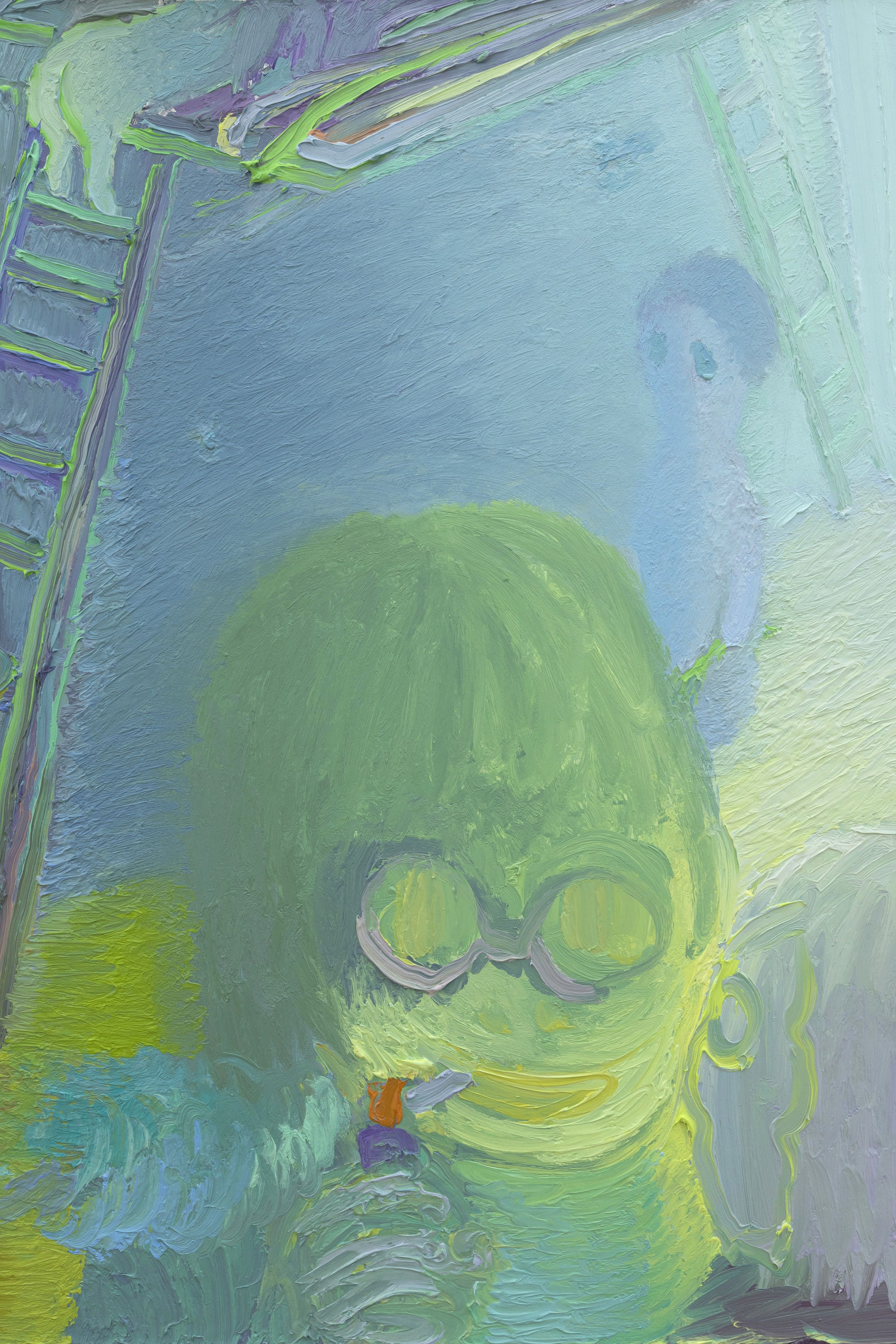
Tsai-Ling Tseng, Studio Breaks, 2024, oil on canvas, 51 x 51 cm (detail). Courtesy of the artist and OTP Copenhagen.
OTP: How do you understand your use of colour in these paintings?
TLS: My use of colour has always been an intuitive choice at the start of a painting. Certain colours evoke specific moods or situations, with purple, brown, and reddish tones carrying more weight than emerald lights and blue skies. Warmer colours feel happier, while cooler tones make me think about things that are more serious and distanced. Colours serve as both clues to the lighting in the space and integral elements of the narrative.
OTP: Which artists have you been thinking about recently?
TLS: Paul Cezanne, Piero Della Francesca, Andrea Mantegna, Bob Thompson, Luc Tuymans, James Ensor, Philip Guston and Turner.
OTP: What sort of signifcance do ideas of “home” have within your practice?
TLS: In my practice, I typically begin with random personal associations tied to certain figures or mark making. Home plays a significant role as one of the inevitable elements in shaping my thought process. I avoid overanalyzing it. I like to think about home as a necessity for the figures to have a space to rest or return to.
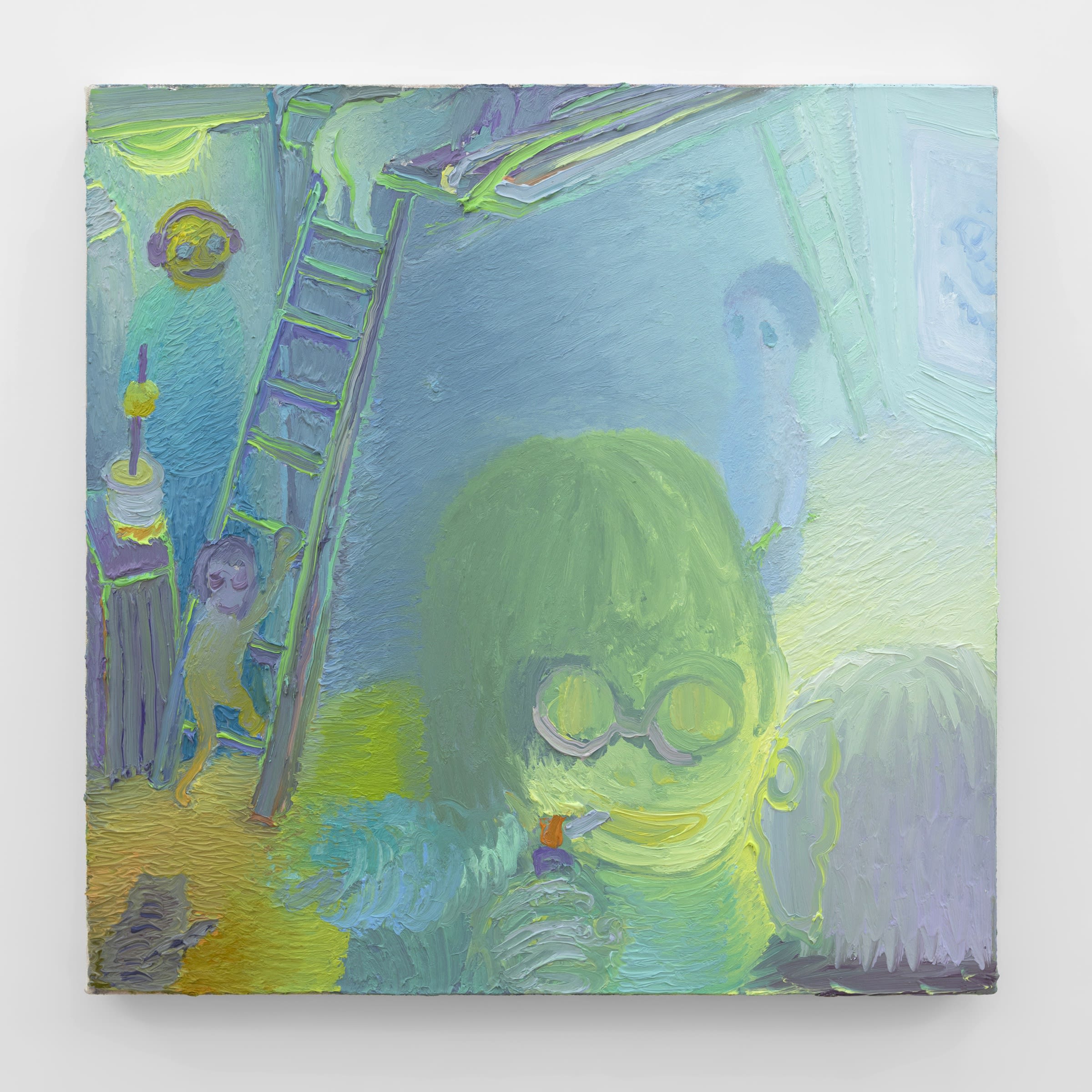
Tsai-Ling Tseng, Studio Breaks, 2024, oil on canvas, 51 x 51 cm. Courtesy of the artist and OTP Copenhagen.
Tsai-Ling Tseng (b. 1991, Taipei; TW) lives and works in Brooklyn, New York. The artist holds an MFA from The School of The Art Institute of Chicago and a BFA from the School of Visual Arts, New York.
Recent exhibitions include: When Feelings Becom Form at Cassina Projects, Milan (IT); Icons at Harkawik Gallery, New York City (US); Minor Feelings at Kapp Kapp, New York City (US).
